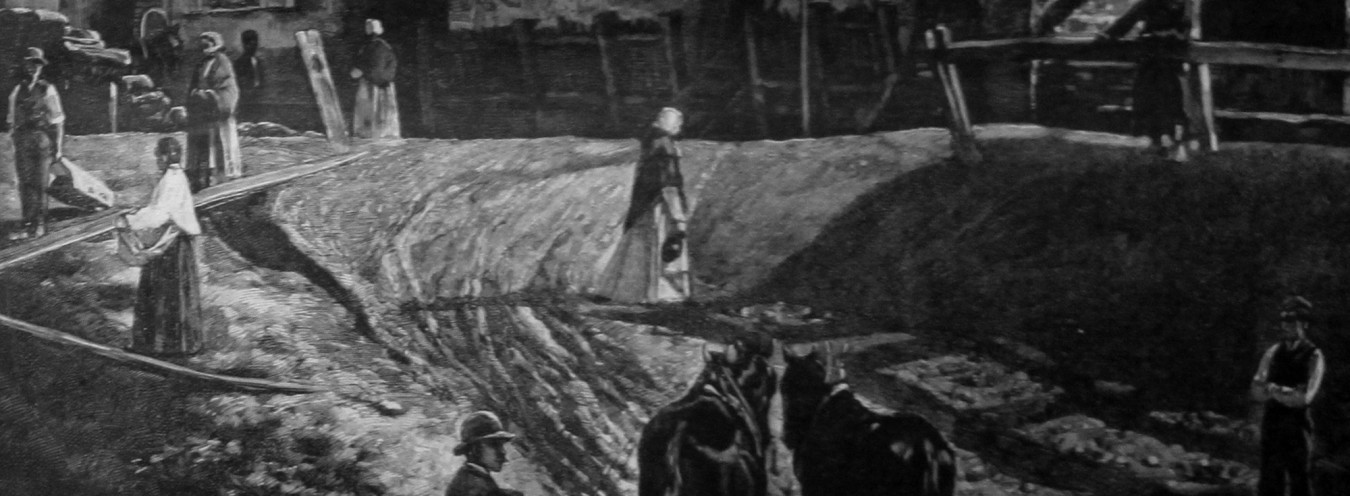
Jews
In general, I have noticed over the last year or two that dislike of the Hebrews is increasing; even people who, a few years ago, called them Poles of the Mosaic persuasion, now call them Jews. And those who recently admired their hard work, their persistence and their talents, today only see their exploitation and deceit. (136)
The dislike of the Hebrews is mentioned many times in The Doll, which succinctly sums up the character of the Polish-Jewish relationships and the dynamics of their change at the period of time depicted in the novel. It is important to remember that the action of The Doll is set between March 1878 and October 1879, i.e. 10 years before the novel was actually written: it appeared in instalments in the Kurier Codzienny from 29 September 1887 to 24 May 1889. That was the time when the positivist optimism about the competent handling of the “Jewish question,” debated throughout the nineteenth century, had already dwindled. The period can be seen as symbolically represented by two events that are not included in Prus’s narrative. The first one was the inauguration of the Great Synagogue of Warsaw in Tłomackie Street on 26 September 1878; the Synagogue soon became the main prayer house of Warsaw’s so-called Progressive Jewry, with sermons delivered in Polish. The other caesura is the Warsaw pogrom that broke out on Christmas Day 1881, resulting in 2 dead, 24 wounded, and considerable damage to Jewish property. The intelligentsia was shocked, with the Warsaw press denouncing the violent attacks. The Warsaw pogrom took place two years after the end of the novel’s action but six years before Prus started working on it. As a consequence, the narrative repeatedly points to the escalation of anti-Semitic, even pre-pogrom feelings. For instance, here is a comment on the rumours of Wokulski selling his store to a Jewish buyer, voiced in a celebrated restaurant over beer by Councillor Węgrowicz: There’ll be a nasty to-do one day with these Jews. They’re pressing in on us, turning us out of jobs, buying us up – so it’s hard to cope with ‘em. We’ll never get the better of them by cheating, that’s for sure, but when it comes to bare fists, then we’ll see who comes off best. In response, Rzecki makes an astonishing declaration: if the Jews buy our store, I’ll join in with the rest of you; my fist still carries some weight. His conversation with Wokulski includes a similar prediction: There’s going to be trouble with the Jews, confirmed by the socialist Klein, who argues his anti-Jewish stance thus: Because we know them well, even though they are flirting with us. […] We know what they are capable of, if they had the strength. Klein is a mouthpiece of the then rising progressive anti-Semitism, which attacked the Jews on leftist grounds. The embittered Rzecki notes down towards the end of his journal: Bad feeling against the Jews is still mounting. There are even rumours that Jews trap Christian children and bake them in matzos.
The depiction of Jews and Polish-Jewish relations in The Doll is resultant of the crisis of positivist answers to the “Jewish question” and the author’s own evolving views on that issue. In brief, Prus could be said to have started with supporting the optimistic programme developed in the late 1970s: general progress, education and increasing wealth were supposed to bring about a gradual assimilation of Jews. Prus lost his belief in these postulates already in the mid-1880s. It is then that the author’s fears of Jewish domination in craft and commerce grew considerably, and he became increasingly disappointed in the full integration programme. Positivist hopes in this respect were fading in the face of the mounting tensions in the last two decades of the nineteenth century. The feeling of being economically threatened by Jews was accompanied by the fear of losing the national and cultural identity to either those who integrated in – or, as some saw it, infiltrated – the Polish society, or by those who, on the contrary, manifested their cultural and religious difference.
Mutual disappointment was a sign of those times. On the one hand, the positivist programme of social integration failed because, against all expectations and ideologist statements, Jews did not wish to assimilate en masse. Quite the contrary, encouragement to do so heightened the sense of their own identity. Poles, in turn, showed a marked reluctance to accept assimilated Jews among them. On the other hand, the Jewish community was also disenchanted by social, linguistic and lifestyle integration without proper care taken of the Jewish religious and cultural identity.
The depiction of Jews in The Doll is thus a testimony to the growing crisis around the “Jewish question,” increasing antagonisms between Polish and Jewish communities, and a festering anti-Semitism among Poles. All the above-mentioned phenomena are reflected in the make-up of the characters who are key to the theme, and the represented world is slowly being poisoned by the atmosphere of hostility.
→ Anti-Semitism; → Szuman, Michał; → Szlangbaum, Henryk, Junior; → Szlangbaum, Senior;
Bibliografia
- A. Cała, Asymilacja Żydów w Królestwie Polskim (1864–1897), Warsaw 1989.
- Z. Borzymińska, Dzieje Żydów w Polsce. Wybór tekstów źródłowych. XIX wiek, Warsaw 1994.
- J. Detka, Żydowska kwestia entry in Słownik literatury polskiej XIX w., ed. J. Bachórz and A. Kowalczykowa, Wrocław 1991.
- J. Bachórz, Introduction to B. Prus, Lalka, BN I 262, Wrocław 1991, 1998.
- A. Żbikowski, Dzieje Żydów w Polsce. Ideologia antysemicka. Wybór tekstów źródłowych, 1848-1914, Warsaw 1994.


